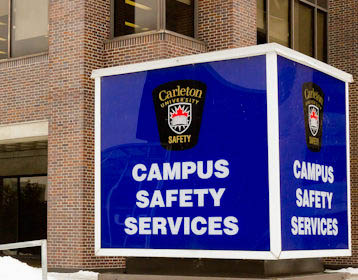A fire in Steacie Building and the accidental threat of an attacker—the first month of 2019 was not a good one for Carleton.
A huge concern brought up by the accidental threat situation is how easily the email went out. In the follow-up email, the university stated that the wrong key had been pressed, sending out the false alarm instead of saving the template. Carleton did not send out a follow-up email until at least half an hour after the first email was sent out.
This space of time was enough to disrupt students’ studies. People on campus did not have enough information to determine what to do next. In a real-life situation, constant updates are often very useful in alleviating panic and stress.
Of course, in an emergency situation, it is difficult to have details to send out when the university itself might not be sure about what is really going on. That being said, a vague message gives the impression of a false alarm.
With some students in a panic and others shrugging the situation off, a sense of uneasiness and fear was created across campus. As many students have said at this point, is this really a message Carleton plans to send out in the event of a real attacker being on campus?
In situations like this, providing information how people on campus should respond to an alert is extremely important for student safety. While professors and TAs can help alleviate panic in classrooms and lecture threatres by barring doors, turning the lights off and telling students to be quiet, what about the thousands of students that happen to be outside of class at the time an emergency notification is sent out?
On a campus with tens of thousands of people in it at any given time, how is someone supposed to know what safe shelter means? What are students in the University Centre supposed to do—or those in the library, the tunnels, or the many open spaces around campus? Carleton may have issued an apology for the situation, but it needs to follow this up with a response to students’ safety concerns.
Another hole in the system was the fact that some people received the message much later, after the message had been revealed to be false. In the case of a real threat on campus, a delay in such a message could be life-threatening.
Carleton should use this incident as an opportunity to hear students’ issues concerning the effectiveness of Carleton’s Emergency Notification System (ENS). Luckily, Carleton does not need to wait for a real threat to adjust its method of addressing emergency situations. If this same message goes out during a real emergency, there is a pretty high chance many people on campus will not treat it as a real threat.
Image from files






